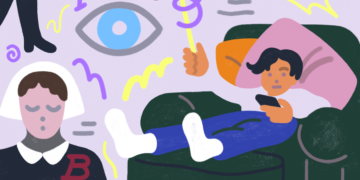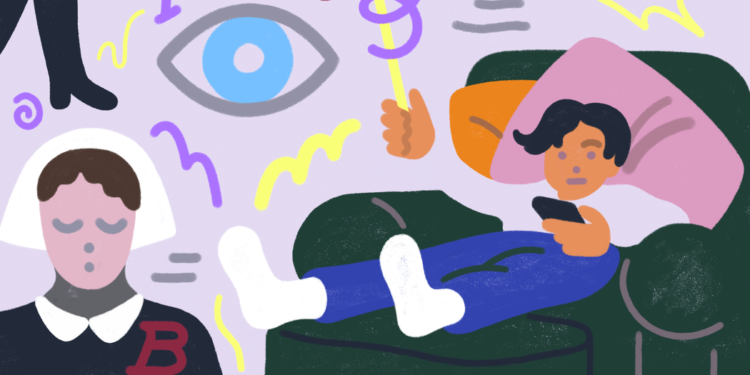Leila Wheless, a North Carolina teacher who has been an educator since 1991, tried to keep “an open heart” about using artificial intelligence in her middle school English and language arts classroom. She reviewed the guidance of her state’s generative A.I. “recommendations and considerations” for public schools. But the results of her students’ A.I. use were dispiriting.
“For one particular assignment related to the novel ‘Persepolis,’ I had students research prophets,” Wheless explained, because the main character fantasizes about being a prophet. But, she told me via email, internet searches that incorporated A.I.:
Gave students jewels such as “the Christian prophet Moses got chocolate stains out of T-shirts” — I guess rather than Moses got water out of a rock(?). And let me tell you, eighth graders wrote that down as their response. They did not come up to me and ask, “Is that correct? Moses is known for getting chocolate stains out of T-shirts?” They simply do not have the background knowledge or indeed the intellectual stamina to question unlikely responses.
After I wrote a series in the spring about tech use in K-12 classrooms, I asked teachers about their experiences with A.I. because its ubiquity is fairly new and educators are just starting to figure out how to grapple with it. I spoke with middle school, high school and college instructors, and my overall takeaway is that while there are a few real benefits to using A.I. in schools — it can be useful in speeding up rote tasks like adding citations to essays and doing basic coding — the drawbacks are significant.
The biggest issue isn’t just that students might use it to cheat — students have been trying to cheat forever — or that they might wind up with absurdly wrong answers, like confusing Moses with Mr. Clean. The thornier problem is that when students rely on a generative A.I. tool like ChatGPT to outsource brainstorming and writing, they may be losing the ability to think critically and to overcome frustration with tasks that don’t come easily to them.
Sarah Martin, who teaches high school English in California, wrote to me saying, “Cheating by copying from A.I. is rampant, particularly among my disaffected seniors who are just waiting until graduation.”
When I followed up with her over the phone, she said that it’s getting more and more difficult to catch A.I. use because a savvier user will recognize absurdities and hallucinations and go back over what a chatbot spits out to make it read more as if the user wrote it herself. But what troubles Martin more than some students’ shrewd academic dishonesty is “that there’s just no grit that’s instilled in them. There’s no sense of ‘Yes, you’re going to struggle, but you’re going to feel good at the end of it.’”
She said that the amount of time her students are inclined to work on something that challenges them has become much shorter over the seven years she’s been teaching. There was a time, she said, when a typical student would wrestle with a concept for days before getting it. But now, if that student doesn’t understand something within minutes, he’s more likely to give up on his own brain power and look for an alternative, whether it’s a chatbot or asking a friend for help.
Students aren’t giving up because they’re lazy, Martin said, but because they’re quick to assume they’re not smart if they can’t grasp certain concepts right away; it’s almost as if the speed of available technology is making them assume that their human brains should have all the answers. They worry that their friends will make fun of them for not catching on fast enough. “It’s avoiding the peer judgment that they anticipate, whether it’s real or not,” she said. These teenagers think: “My friends are going to see I don’t get it. They’re going to think I’m stupid.”
Many instructors have wised up to student use of A.I. and have already changed their methods of instruction, in some cases relying less on assignments that are completed outside of the classroom, or updating their coursework to make cheating more difficult. Several English teachers told me that there are fewer accurate plot summaries about newer books, so it’s harder to get generative A.I. to write a good essay about a book written in 2023 than about “The Catcher in the Rye.”
Teachers have also tried to A.I.-proof their tests. Jerald Hughes, an associate professor of information systems at the University of Texas Rio Grande Valley, told me that in his coding classes, he has replaced traditional quizzes with an in-class game that requires quick responses. “It’s like a Space Invaders game that you’ve only got a few seconds to get to the right answer,” he told me. And students need a perfect score to pass.
Hughes, who is also the associate dean for undergraduate studies, told me that he also customizes his test questions. For instance, instead of asking his students to create a disaster plan for an I.T. center, he presents them with a scenario like this: You’re the C.E.O. of a small trucking firm located in Port Isabel, on the Texas coast. Make a disaster plan for this company. Chatbots, he said, cannot offer this level of detail in a satisfying way, at least not yet.
Hughes sees this approach as preparing his students for job interviews, in which basic facts will have to be at their fingertips and they won’t be able to rely on A.I.
The educators I spoke to seem to have the right attitude of skeptical practicality: They know A.I. isn’t going away, so they aren’t banning it from their classrooms, but they are mostly unconvinced of its transformative properties and aware of its pitfalls. There’s a reason only 6 percent of American public school teachers think that A.I. tools produce more benefit than harm.
I’m more worried about the policymakers who appear to have drunk the Kool-Aid on artificial intelligence: Some seem to believe that we’re peering into a kind of open maw that will eventually swallow all of our jobs and educational processes, so we better acquiesce, or else.
In July, my newsroom colleague Dana Goldstein reported that the Los Angeles Unified School District had agreed to pay a start-up called AllHere “up to $6 million to develop Ed,” a chatbot that “would direct students toward academic and mental health resources, or tell parents whether their children had attended class that day, and provide their latest test scores.”
The school district’s superintendent, Alberto Carvalho, crowed about the potential of this new technology. He appeared at Arizona State University’s annual summit with Global Silicon Valley on a panel titled “Bright Spots: K-12 Leaders’ Guide to Embracing a Generative A.I. World.” But as Goldstein reported: “Just two months after Mr. Carvalho’s April presentation at a glittery tech conference, AllHere’s founder and chief executive left her role, and the company furloughed most of its staff. AllHere posted on its website that the furloughs were because of ‘our current financial position.’” Reporting in July for the education website The 74, Mark Keierleber wrote that right before AllHere went belly up, a whistle-blower tried to warn the school district that the Ed chatbot “violated bedrock student data privacy principles.”
If policy experts think that A.I. can part the Red Sea, maybe our students aren’t the only ones who need to develop their critical-thinking skills.
The post A.I. Could Ruin Kids’ Critical-Thinking Skills appeared first on New York Times.



















